ASUS VG236H 23-inch 3D Display Review: 120Hz is the Future
by Brian Klug on August 7, 2010 2:48 AM ESTImpressions and Subjective Analysis
Packaging for the VG246H is definitely a step above the drab cardboard boxes all my other monitors have come in, but honestly it’s probably not going to be something you keep around. Still nicely done though.
Inside is lots of styrofoam - the 3D Vision Kit comes cleverly nested in a small recessed area off to the right and gets protected the same way as the display. Carefully placed inside is the display itself, the monitor base, a few accessories bags for cables, a manual and getting started guide, and the warranty.
Assembling the display is easy, but not quite as polished of an undertaking as the other stands I’ve used. You lay the display flat on a desk or table (which is a bit scary, since you could scuff or scratch the important bits you're going to be staring at), and then screw the base into the display arm using a supplied nut which folds down, letting the assembly rotate.
The part that’s scary is releasing the height adjustment lock, which is literally a pin jammed in the mechanism, preventing the spring loaded height-adjustment arm from extending. There’s an awesome diagram in the manual which pretty much says it all.
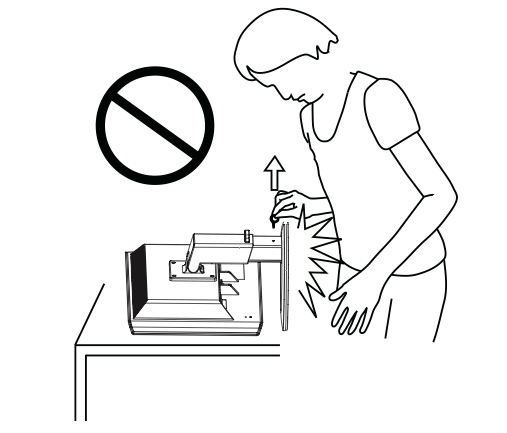
There’s also a yellow warning sticker right above where the pin is too. Thank goodness. Seriously, pull that pin out carefully, and only when you’re ready, or the monitor base will literally smash into your chest, or... other sensitive bits like that diagram above. Not fun.
Other display arms also usually have a height lock with a button of some kind, locking the display in its lowest height position. That makes it easy to transport the whole display assembly without having the base extended all the way and hitting your knees the whole time. Unfortunately, the VG236H lacks one of those - pick the display up, and the base will be sticking all the way out in its maximum extended position. Honestly, this is is the only truly major oversight on the entire display that I have some issue with.
The nice part about the display base however is that it swivels 150 degrees in each direction, which is awesome. The stand also tilts, and you get about 4 inches of height travel.
|
Tilt: -5 degrees to15 degrees
|
||
 |
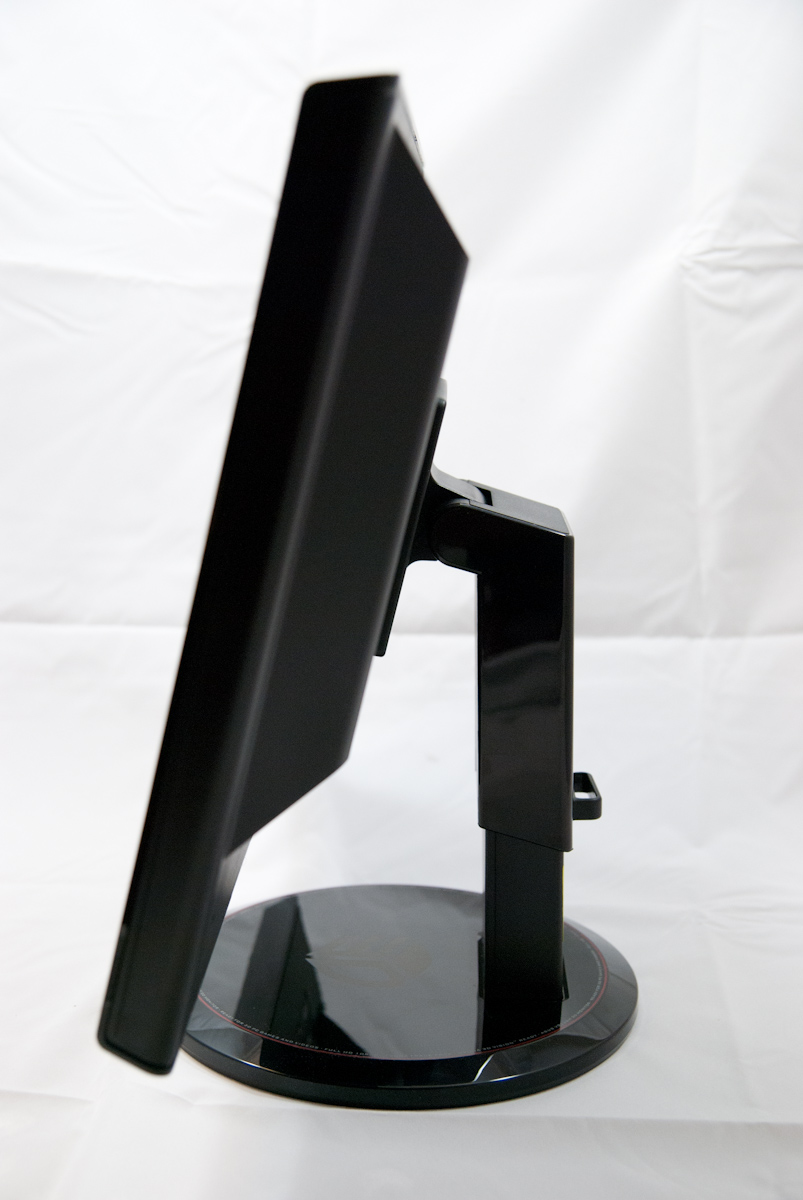 |
|
To be honest, the display arm feels a bit flimsy, but gets the job done just fine. The assembly is nicely balanced as well, not requiring much force to rotate, tilt, or adjust height. There’s no locking mechanisms for any of those three axes of adjustment, however.
|
Height Travel
|
||
 |
 |
|
Again, most of the monitor’s plastic bits that face you are glossy plastic, and do show fingerprints. Curiously enough, the back of the display is standard textured matte plastic. I’m left wondering why the whole thing couldn’t be this way. The base of the display is also glossy, as is a bit of the height adjustment arm.
There’s a cable guide on the back, if you use those.
Additionally, the display is VESA mount compatible (the arm it ships with is screwed in there), so you can roll your own stand if you choose like I usually do.


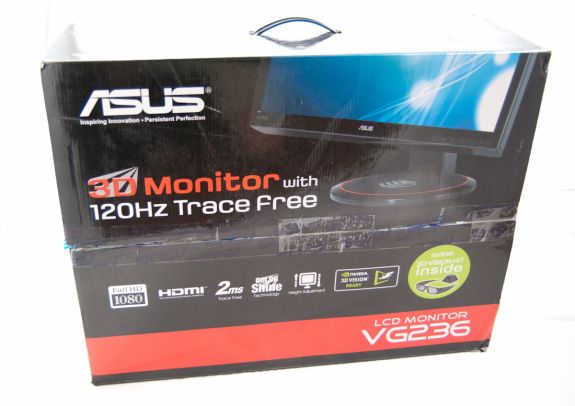
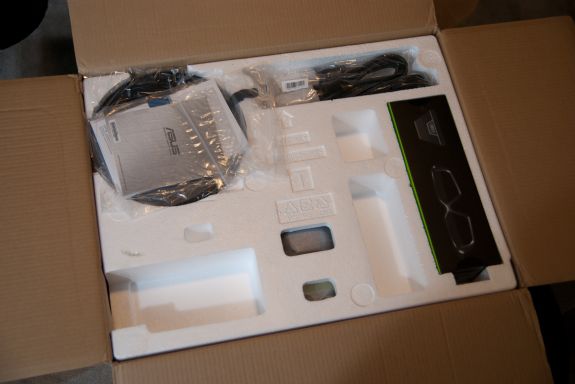
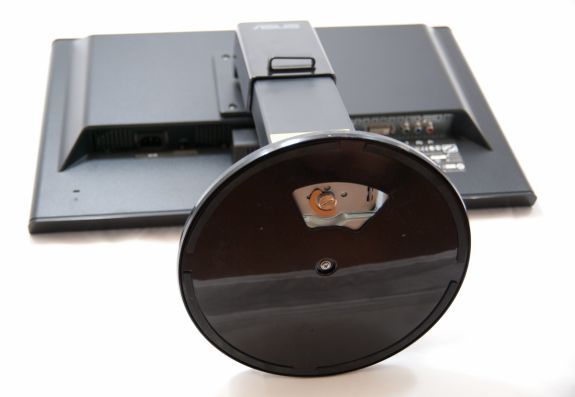
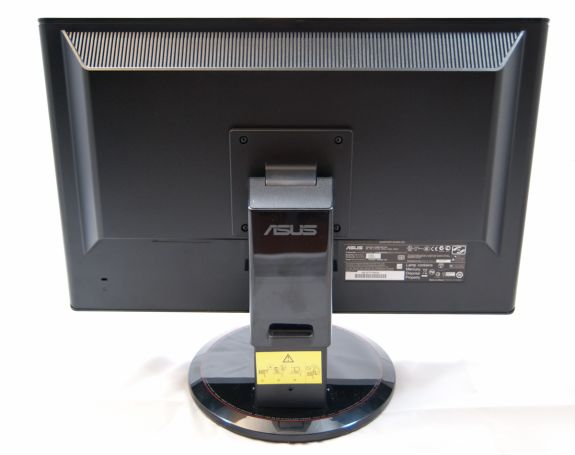








121 Comments
View All Comments
HDPeeT - Sunday, August 8, 2010 - link
120hz HDTVs have more input lag because they don't actually accept 120hz input signals but instead interpolate frames from a 60hz or 24hz signal. This of course takes a considerable amount of time since the display has to analyze several frames before it can create the interpolated frames. 120hz/3D monitors such as this one actually accept a true 120hz signal from your video card, so there is no need to create additional ones through interpolation. All things being equal, a monitor that is receiving 120fps SHOULD have LESS lag than one that is only receiving 60fps. Of course all things might NOT be equal here, as the display might have more processing than some of the faster 60hz monitors out there.Like you, I also don't understand how they came up with the 3.9ms figure............he did say that the Asus was "consistently" 1 frame behind the other LCD, which would mean it has at LEAST 8ms of input lag.
DarkUltra - Sunday, August 8, 2010 - link
The DVI link tech is not buffering or packadge based. It transfers all three colors, one pixel at a tiime. Fortunately, LCD can have zero input lag (compared to a CRT). Overdrive is not really a digital processing job, like say interpolation or scaling. It just gives the crystals an initial volt bump, then lowers the volt to normal levels. This is so the crystals turn faster.http://www.digitalversus.com/duels.php?ty=6&ma...
However, input lag should be measured on the same output.
testing with two displays connected to the two outputs of a video card and using a clone mode does not give accurate results – they simply vary too much! So in order to compare displays and have an accurate judgment on the presence or lack of input lag you must use a passive video splitter that is capable of splitting a single video signal to two displays.
http://3dvision-blog.com/viewsonic-vx2268wm-has-ju...
nvmarino - Sunday, August 8, 2010 - link
Great news! Thanks for the extra effort!Stokestack - Sunday, August 8, 2010 - link
"and I’ve yet to see passive polarization methods used outside the movie theatre"They exist. At SIGGRAPH at least two years ago, someone (I think it was JVC) demoed a 3-D monitor that had every other horizontal line polarized in the opposite direction. Not a bad choice; you got half vertical resolution, but full horizontal resolution.
DarkUltra - Sunday, August 8, 2010 - link
Is there a white halo effect around text and graphics in 2D "desktop" use like the Acer GD245HQ? Is there a sharpening effect? Can it be adjusted?http://img179.imageshack.us/img179/3688/acergd245h...
dgz - Monday, August 9, 2010 - link
"The necessity for 120Hz panels arose entirely out of the ongoing 3D obsession" is plain wrong.Quake should be played at 120Hz as all other frantic FPS games. For CoD kids 60Hz and "3D" may be fine, though.
dgz - Monday, August 9, 2010 - link
Good ol' CRTs, how I miss you :(dgz - Monday, August 9, 2010 - link
Just asking.Zap - Monday, August 9, 2010 - link
Regarding polarized 3D mentioned in the article, IZ3D has brought polarized 3D tech (using cheap polarized glasses) to gamers for several years. Just wanted to throw that out there.zoxo - Monday, August 9, 2010 - link
I think every 3D technology that uses active glasses is garbage. Manufacturers need to create circularly polarized monitors before it is really usable.